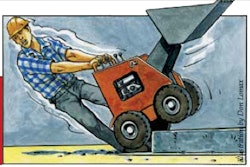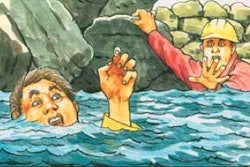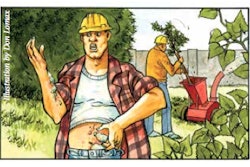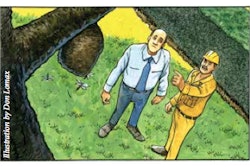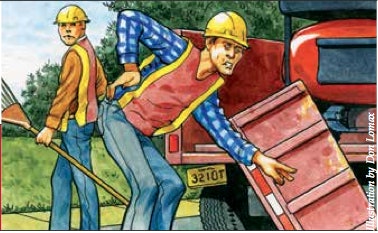
The day had been long, the sun brutal, and the worker was looking forward to air conditioning and a shower. As he lowered the 40-pound metal gate, a shot of pain pierced his lower back and he realized he was bending at the waist instead of the knees. The lumbar strain caused back pain for the next three days.
What the expert says: Incidents like this usually happen late in the day, when fatigue, heat and repetition lead to carelessness, says Steve Marcero, co-owner of JSM Landscaping in Fort Gratiot, Michigan, and a former program manager for Work-Fit, which provides injury-prevention services to employers.
Marcero says the keys to avoiding injury when loading or unloading trailers are proper lifting techniques and strong, flexible muscles. You should not move loads weighing more than 50 pounds by yourself. Here’s how to properly lift or lower objects weighing 50 pounds or less:
Face the object, place your feet shoulder-width apart and make sure your footing is firm.
Ensure gloves fit correctly and get a good grip on the object. Use the strength of your entire hand(s), not just your fingers.
Keep the load close to your body and directly in front of you. Keep your elbows, chin and arms tucked in tightly and your body weight directly over your feet.
Bend at your knees and lift with your legs while keeping your back as straight as possible. Lift or lower the object in a smooth, controlled motion. Avoid twisting motions.
Don’t lift loads higher than your chest or toss objects weighing more than five pounds.
Overreaching and reaching over the side of a trailer to grasp an object are common mistakes. “Try to keep your arms glued to your sides,” Marcero says. “If you reach out more than one foot, you’ve lost all leverage from your body. All the pressure will be on your wrist, elbow or shoulder.” Tendonitis and elbow problems can result from improperly and repetitively lifting something as light as a 10-pound trimmer.
Stretching the hamstrings and lower back muscles daily is one of the best ways to avoid lifting injuries and mitigate muscle pain, Marcero says, although most workers don’t believe it until they’ve followed a stretching routine a few weeks and begin feeling better. Documents illustrating appropriate stretches are available from Work-Fit.

